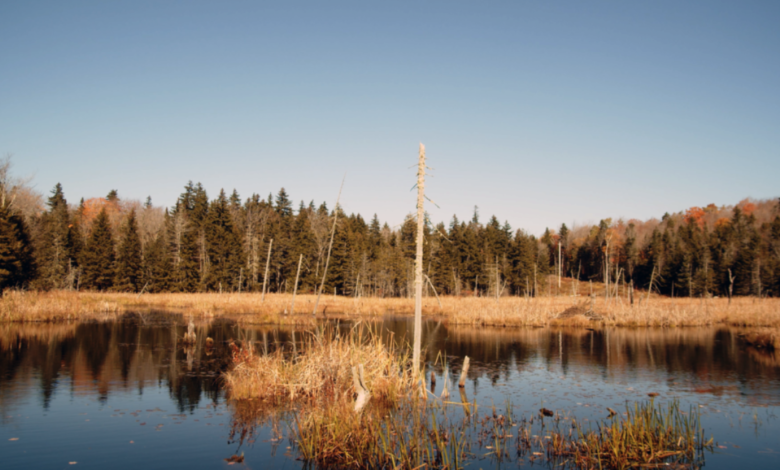Stick Season Lyrics: A Deep Dive into Noah Kahan’s Autumnal Masterpiece

Introduction: The Rise of Noah Kahan and the Magic of “Stick Season”
In recent years, singer-songwriter Noah Kahan has become a poignant voice in the indie-folk scene. Known for his raw vulnerability and lyrical honesty, Kahan’s breakthrough came with his 2022 single “Stick Season,” a song that quickly resonated with fans across the globe. The track isn’t just catchy; it’s deeply introspective and profoundly human. Its lyrics encapsulate themes of change, isolation, heartbreak, and nostalgia—all tied into the seasonal metaphor of the New England “stick season.”
“Stick Season” isn’t just a title—it’s a specific term used in New England to describe the bleak period between fall and winter when the trees have lost their leaves, but the snow hasn’t arrived yet. It’s a time of transition, uncertainty, and emotional weight—perfect fodder for Noah Kahan’s deeply emotional songwriting. The lyrics capture not just the atmosphere of the season, but the inner turbulence that often accompanies personal change.
This article will explore the lyrics of “Stick Season” line by line, uncover the meaning behind them, and examine the context in which the song was created. We’ll also take a look at the cultural and emotional impact of the song, how fans have interpreted it, and why it has become something of an anthem for the emotionally tuned-in.
Understanding “Stick Season”: The Concept and Setting
Before diving into the lyrics themselves, it’s important to understand the backdrop of the song. Noah Kahan hails from Strafford, Vermont—a small, quiet town nestled in the heart of New England. Growing up in a rural setting, Kahan frequently draws inspiration from the stark landscapes and seasonal changes that characterize the area.
Stick season is a real term used in Vermont and other New England states to describe the time between autumn’s vibrant colors and winter’s white snow. It’s an in-between period where everything feels bare, gray, and cold. Trees stand like skeletons, stripped of color and life, waiting for the first snow to blanket the earth. This desolate visual perfectly mirrors the emotional themes in the song.
It’s not just a poetic metaphor—it’s a lived experience for people in that part of the country. Life slows down. The holidays are near but haven’t arrived. The beauty of fall fades into the starkness of winter. In many ways, the lyrics of “Stick Season” capture that moment of melancholy when you’re stuck waiting for something—anything—to change.
Opening Lines: Setting the Emotional Tone
The song begins with the lines:
“And I love Vermont, but it’s the season of the sticks.”
This simple declaration sets the tone for the entire song. It’s a love letter with a footnote of heartbreak. The duality here is crucial. Kahan acknowledges his affection for his home state, but also admits that it’s tinged with melancholy. It’s an honest depiction of loving something even when it hurts.
The use of the word “sticks” isn’t just geographical—it’s emotional. Just as the trees have been stripped bare, so has the narrator. There’s a vulnerability in these words that immediately draws the listener in. The phrase isn’t dramatic, but it’s powerful in its simplicity.
The contrast between natural beauty and emotional desolation becomes a recurring theme throughout the song. Kahan does a masterful job of letting the environment mirror his inner state. The landscape becomes a character in its own right.
Heartbreak and Reflection: Diving into the Chorus
As the chorus kicks in, we hear:
“I saw your mom, she forgot that I existed.” “And it’s half my fault, but I just like to play the victim.”
Here, Kahan delves into the aftermath of a breakup. These lines are painful in their honesty. The mention of an ex’s mother forgetting about him adds a layer of realism that many listeners can relate to. It’s not just about losing a partner—it’s about losing a place in someone’s life, their family, and their routine.
There’s also an interesting admission of guilt—”it’s half my fault.” This isn’t a blame game. Kahan takes some responsibility but also confesses a tendency to play the victim. This duality makes the narrator more relatable. How many of us haven’t fallen into that trap during a breakup? It’s a self-awareness that adds depth to the song.
These lines also show that heartbreak doesn’t occur in isolation. It reverberates through community, memory, and even geography. The small town in which the story is set becomes a constant reminder of what’s been lost.
The Power of Specificity in Storytelling
One of the strengths of Kahan’s songwriting is his use of specific imagery and details. Rather than speaking in generalities, he anchors his lyrics in real moments:
“And I’ll dream each night of some version of you / That I might not have, but I did not lose.”
These lines encapsulate the limbo of post-relationship longing. The narrator dreams of a different outcome—a version of his partner he could have had under different circumstances. But instead of fully letting go or holding on, he’s caught in the in-between.
The brilliance of these lines lies in the paradox: he “might not have” this person, but he also “did not lose” them. That contradiction is where emotional reality often lives. It’s neither acceptance nor denial—it’s that uncomfortable middle ground where you’re haunted by what could have been.
This kind of lyrical complexity is what elevates Kahan’s work. It’s not just about love lost; it’s about the human tendency to ruminate, to imagine alternate realities, and to live partially in memory.
Small Town Living: Claustrophobia and Comfort
Throughout “Stick Season,” there are recurring themes of small-town claustrophobia. The kind of place where everyone knows your business, where you can’t escape your past, and where memories are etched into the streets you walk every day.
“Now you’re tire tracks and one pair of shoes / And I’m split in half but that’ll have to do.”
These lines conjure the aftermath of someone leaving. They left behind tire tracks, a pair of shoes—symbols of abrupt departure. The narrator is left split, broken, but trying to move on. There’s a resignation in “that’ll have to do” that captures the defeat one feels when there’s no closure.
Small towns can be both comforting and suffocating. They hold memories in every corner. Walking to the local store can mean passing the place where your heart was broken. Kahan captures this duality masterfully, showing both the safety and the pain that comes from knowing a place so intimately.
Musicality Meets Lyrical Depth
Aside from the lyrics, the music in “Stick Season” enhances its emotional resonance. The acoustic guitar strumming is simple but effective. It creates an open soundscape that mirrors the wide, barren landscapes of New England’s stick season. There’s a sparseness in the arrangement that matches the emotional tone.
Kahan’s voice is another key instrument. It’s unpolished, often cracking with emotion, and that rawness is what makes it so compelling. You believe every word he sings because it sounds like he’s living it in real time. The vulnerability in his vocal delivery elevates the lyrics even further.
Instrumentation builds subtly throughout the song, allowing for emotional crescendos without overshadowing the lyrics. The arrangement serves the storytelling, rather than distracting from it—a testament to thoughtful songwriting and production.
The Internet’s Reaction: Viral Success and Cultural Impact
“Stick Season” gained massive traction on social media platforms, especially TikTok. Clips of the song went viral, often accompanied by personal stories, scenic nature shots, or emotional reflections. This helped the song reach a much wider audience, many of whom connected deeply with its themes.
The lyrics became the backdrop to countless videos about breakups, life changes, and seasonal depression. The emotional honesty resonated across age groups and demographics. It wasn’t just a song; it was a collective feeling, something that gave people permission to acknowledge their own sadness.
Kahan himself has acknowledged how surprising and meaningful the song’s reception has been. It’s not often that a melancholic folk tune becomes a viral hit in an age dominated by upbeat pop and rap. But that’s a testament to the power of authentic storytelling.
Fan Interpretations: Layers of Meaning
Fans have interpreted “Stick Season” in various ways. For some, it’s about the loneliness of rural life. For others, it’s a metaphor for depression, liminality, or even political disillusionment. The song’s openness allows for multiple readings, which only adds to its staying power.
Many fans have shared how the song helped them process grief—not just romantic, but also familial or existential. That’s the mark of great art: it meets people where they are and offers a mirror to their own experiences.
Discussions in Reddit threads, YouTube comments, and Twitter posts often reflect a communal sense of catharsis. People feel seen by the lyrics. They recognize themselves in Kahan’s vulnerability. And in doing so, they find comfort.
Comparisons to Other Singer-Songwriters
Noah Kahan’s lyrical style is often compared to artists like Bon Iver, Phoebe Bridgers, and even early Taylor Swift. Like these artists, Kahan focuses on storytelling, emotional nuance, and geographic specificity.
But Kahan brings something unique to the table. His Vermont upbringing and New England sensibility give his music a distinct sense of place. His lyrics are rooted in the soil, in the seasons, and in the stillness that comes with rural life.
His humor also sets him apart. While “Stick Season” is melancholic, it’s not without its sly wit. Lines like “I just like to play the victim” show a self-awareness that keeps the song from becoming overly sentimental.
Conclusion: Why “Stick Season” Matters
In an era of heavily produced music and surface-level lyrics, “Stick Season” stands out as a genuine, heartfelt piece of art. It’s a song that captures a moment—both seasonal and emotional—with clarity and compassion. Noah Kahan has created something timeless by being specific, honest, and vulnerable.
The lyrics to “Stick Season” invite listeners into a world that feels both personal and universal. They remind us that it’s okay to sit with sadness, to acknowledge transitions, and to find beauty in the barren. Just like the trees in stick season, we may feel stripped down—but that doesn’t mean we’re not still standing.
Whether you’re going through a breakup, dealing with seasonal depression, or simply reflecting on life’s many changes, “Stick Season” offers a soundtrack that understands. And sometimes, that’s exactly what we need.
FAQs About “Stick Season” Lyrics
1. What is the meaning behind the song “Stick Season” by Noah Kahan?
The song explores themes of heartbreak, seasonal depression, and the emotional in-betweenness of post-breakup life. It uses the metaphor of New England’s “stick season” to capture this sense of emotional limbo and rawness.
2. Why is it called “Stick Season”?
“Stick Season” is a term used in New England to describe the period between fall and winter when trees are bare, and snow hasn’t arrived. It symbolizes a time of bleakness and transition, mirroring the song’s emotional tone.
3. How did “Stick Season” become so popular?
The song went viral on TikTok and other platforms due to its deeply relatable lyrics and emotional resonance. Fans used it as a soundtrack for personal stories, helping it gain widespread attention.
4. Is “Stick Season” based on a real breakup?
While Noah Kahan hasn’t confirmed the exact details, the lyrics suggest a very personal and specific experience of heartbreak, likely inspired by real events from his life.
5. What genre is “Stick Season”?
The song falls under the indie-folk genre, blending acoustic instrumentation with emotionally driven lyrics. It’s known for its raw vocal delivery and poetic storytelling.





